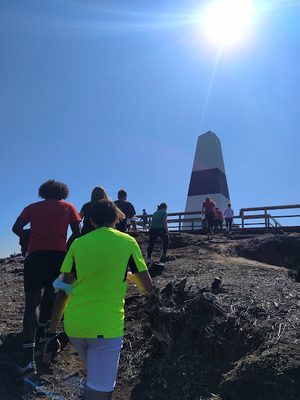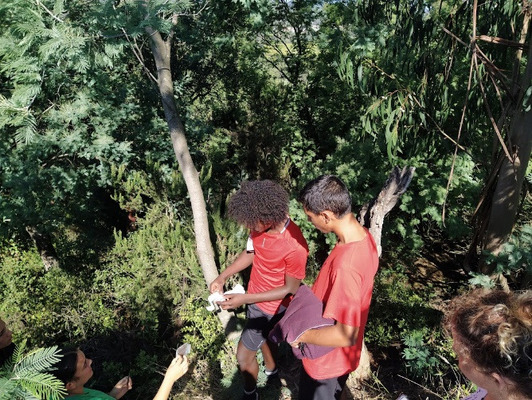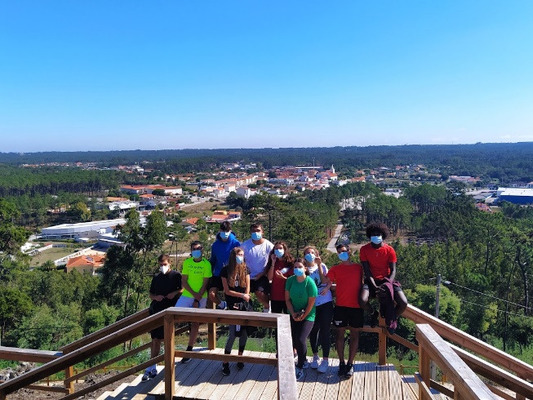Topic: Geocaching and Orientation
Grade: 12th Grade
Number of hours: 2 school hours
Author: Alexandre Pinto
Short description:
The lesson is designed to be performed during regular sports classes with twelve-grade students. During classes, classes will be combined in the IT classroom and the school's immediate surroundings. Students will learn how to use the Geocaching app and how to play the game. The school environment is full of threes and a few hiils. There is a Geocache hidden on a three in the top of one of those hills. It is easily accessible to kids and suitable for quickly leaving the classroom and returning to it. It is interesting for children to go outside the classrooms, they like to take photos and share it in social media.
Learning objectives:
- Students learn how to use their smartphone app or GPS to navigate to the cache.
- Students learn to follow the most basic rule in Geocaching: leave no trace during your hunt.
- Students can properly use technology to suit their needs.
Process:
Geocaching 101:
1. Create an account
Create an account online or through the Geocaching® app to view a map of geocaches near you.
2. Find a geocache
Use the app to navigate to a geocache nearby. Don’t forget to bring a pen!
3. Share your experience
Once you find the geocache, sign and date the logbook. Place the geocache back where you found it and log your experience online.
What is Geocaching:
Geocaching is an exciting outdoor adventure for the whole family. It’s a treasure hunt for the digital generation, where you can enjoy the freedom of being outside and discovering new places. All you need is a handheld GPS and a sense of fun.
A geocache or ‘cache’ is a small waterproof treasure box hidden outdoors. Geocachers seek out these hidden goodies guided by a GPS enabled device which uses coordinates, or ‘waypoints’ downloaded from the geocaching.com website or you can download a free geocaching app for Android or iPhone.
Seeking a Cache
After you’ve done some research on potential caches at home, you’ll use the app when you’re out looking for them. Check the app’s map page for nearby caches and then click on the one you want to find. The cache page offers details and hints to help you on your quest. The app’s features take some trial and error until you become proficient, but it’s intuitive to use. Geocaching.com also offers tips on how to navigate to a cache.
The map view shows how close you are (plus or minus abut 30 feet), but it won’t show you the best route to take to get to a cache. You decide that by paying attention to terrain details on the map, as well as your surrounding environment. Looking up from the screen as you search also helps you keep an eye out for nearby hazards. Switch to the compass view when you get close because that can point you in the direction where you should look when you’re in the immediate vicinity of the cache.
Now you must sleuth out likely hiding places for the cache. Take your time and be observant—locating the cache once you’re close can take time, especially at first. Keep in mind the size of the cache and be watchful for anything that looks subtly unnatural or unusual.
Once You Find a Cache
Now it’s time for you to examine your cache’s treasure.
Geocaching Etiquette for Cache Finders
To avoid tipping off others to the location, carefully remove the cache and then move away to examine its contents.
Check out the swag inside the cache and sign the logbook with your geocaching.com username.
Take one item out (if you want to), but only if you replace it with a new item of equal or higher value.
If the item you take is a “trackable” (see below), then you also have an obligation to move that item to a new cache.
Carefully seal the cache and hide it exactly as you found it. Don't try to make it easier or harder for the next person to find.
Once back at home, go to geocaching.com and write a log to let the cache owner know you found it. Note the condition of the cache and provide future geocachers anything they might want to know—don’t provide any spoilers, though.


